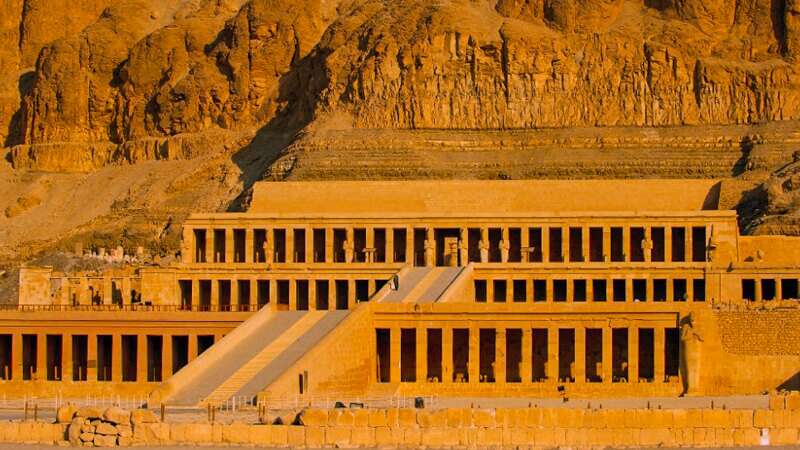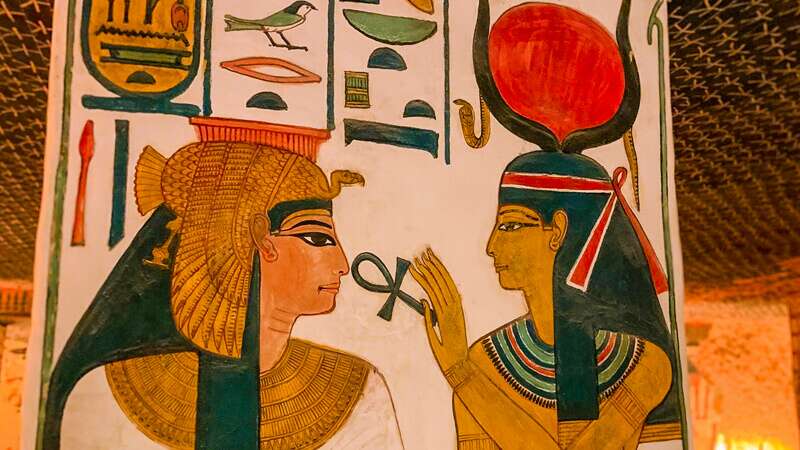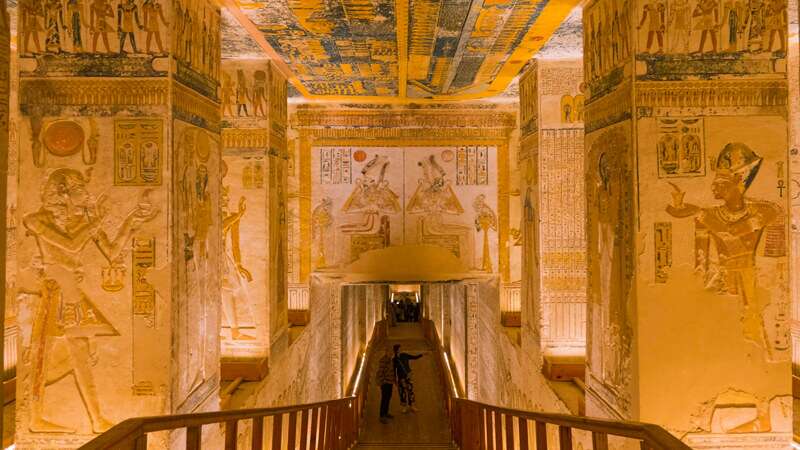Valley of the Queens in Luxor Egypt
The Valley of the Queens is the burial place of the queens in ancient Egypt. It was known in ancient times as “Ta-Sit-Nehru,” which means: “the place of the sons of the pharaoh” or “the place of beauty”; Because in this place were buried the queens of the 18, 19, and 20 dynasties (from 1550 to 1070 BC), in addition to many princes and princesses and a number of the nobility. The tombs of these individuals were preserved by priests who performed daily funeral rites and prayed for the dead nobles.
Don’t miss to check our vacation packages to Egypt to enjoy visiting the tombs of famous queens of Egypt.
Where is the Valley of the Queens Located?
Valley of the Queens is located in Egypt near the famous Valley of the Kings, on the west bank of the Nile in the Luxor Governorate.

Facts about Valley of the Queens
Valley of the Queens Named by Champollion, To the southwest of the Valley of the Kings, you can find the Valley of the Queens, home to the tombs of many royal wives and children. Although it was used as a memorial in the 18th Dynasty, not until the reign of the 19th Dynasty pharaoh Ramses I that royal queens began to be laid to rest here.
Before that, it was exclusively used as a burial site. The tomb of Queen Nefertari is the most well-known of the over 80 graves in the Valley. Although, only a selected few of these tombs are accessible to the general public at any moment.
After the conclusion of the twentieth Dynasty, the Valley was no longer seen as a royal burial site, in addition to the fact that it had been an important location for the burial of queens, princes, and even some nobles during the 18th and 19th dynasties. There have been several burials in many tombs due to their widespread usage and the modifications made to many of them. In other respects, this required creating burial pits inside preexisting cemeteries.
Very little information is available regarding the Ptolemaic period’s use of the Valley of the Queens. The Valley was again used extensively by the Romans as a burial ground. During the time of the Copts, several of these cemeteries became home to hermits and monks who lived in shelters that had been constructed there.
There is evidence of the presence of Coptic Christians in cemeteries. The pictures on the walls describing death and the Egyptian deities were covered with layers of plaster. Sometimes Christian symbols were removed or painted over them with red ink, and the Christian presence ended in these tombs until the seventh century A.D.
The most famous tombs in the Valley of the Queens
In addition to the nearly 20 tombs that may be found in the Valley of the Queens’ other subsidiary valleys, the Valley of the Queens in Luxor is home to around 91 graves.
Some of these tombs have multiple scenes and texts from this Book of the Dead, as well as scenes of drawings of the deceased before the gods. In addition, some of these tombs have locations with pictures of the gods. The following are the most well-known of these tombs:
- Tomb of Queen Nefertari
- Kha Um Wast Cemetery
- Tomb of Prince Hurr Khabbesh F
- Tomb of Merit Amon
- Tomb of Hanouttawy
- Tomb of Merit Ra
- Tomb of Prince Ahmose
- Tomb of Min Em Hat and Amunhotep
- Tomb of Queen Dua Tent Opt
- Tomb of Princess Neferhat and Prince Baki
- Tomb of Prince Ramses
- Tomb of the Princesses Merit Ra and War Mariots
The Tomb of Nefertari

The tomb of Nefertari is One of the most famous tombs in the Valley of the Queens in Luxor, which tourists from all over the world visit. It was discovered in 1904 and has not been opened to the public since its discovery until the early nineties of the last century due to some damage to the inscriptions and decorations due to salt deposition. The tomb is replete with descriptions and live murals.
Nefertari was the great royal wife (or chief wife) of Ramesses the Great, where the word Nefertari means beautiful companion, “beloved like no other,” “beautiful of the worldly beauties,” or star-like Nefertari is King Ramses II’s most famous and essential wife. She lived in the nineteenth Dynasty in the 13th century B.C. B.C., and among his other wives, Este Nefert and Neferura died, a Hittite princess and the number of his children reached about 90 sons and daughters.
Nefertari is one of the most famous Egyptian queens, such as Cleopatra, Nefertiti, and Hatshepsut. Nefertari was sanctified like her husband, and she was not the first to hold this preference. She was preceded by Queen Ahmose-Nefertari, the dean of the Eighteenth Dynasty, whom the ancient Egyptians revered according to their beliefs, and Queen Nefertari, the wife of King Tuthmosis IV.

